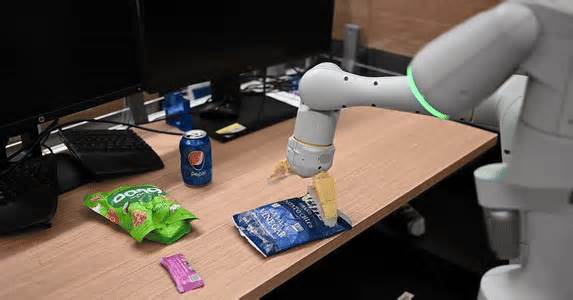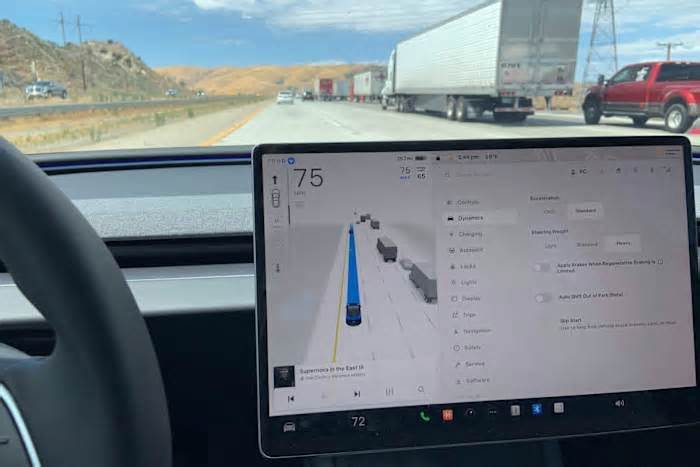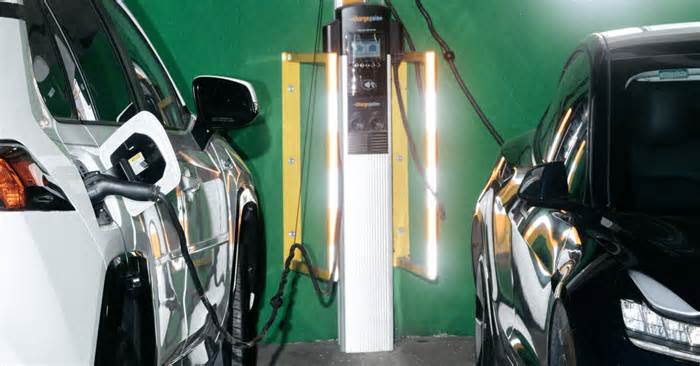
Inside the Billion-Dollar Startup Bringing AI Into the Physical World
- by Wired
- Nov 14, 2024
- 0 Comments
- 0 Likes Flag 0 Of 5

Save
On a metallic door in San Francisco’s Mission District, a single character—“π”—offers a cryptic clue as to the virtuous circle of labor taking place beyond.
The door opens to reveal furious activity involving both humans and machines. A woman uses two joysticks to operate a pair of tabletop robotic arms that carefully lift and fold T-shirts into a neat pile. Several larger robots move pantry items from one cluttered box to another. In one corner of the room a man operates a plastic pincer that fits over his wrist and has a webcam on top. Robot parts litter the room.
The warehouse is home of Physical Intelligence, also known as PI or π (hence the symbol on the front door), a startup that aims to give robots a profound artificial intelligence upgrade. Such is the excitement and expectation around the company’s dream that investors are betting hundreds of millions that it will make the next earth-shaking breakthrough in the field of AI. Physical Intelligence last week announced it had raised $400 million from investors that include OpenAI and Jeff Bezos, at a valuation of over $2 billion.
Inside a glass-walled conference room on the second floor of the building, the startup's CEO, Karol Hausman, a tall man with a soft German accent and a few days of stubble, lays out the vision.
“If I put you in control of a new robot, with a little bit of practice you'd probably be able to figure out how to control it,” Hausman says. “And if we really crack this problem, then AI will be able to do the same thing.”
Physical Intelligence believes it can give robots humanlike understanding of the physical world and dexterity by feeding sensor and motion data from robots performing vast numbers of demonstrations into its master AI model. “This is, for us, what it will take to ‘solve’ physical intelligence,” Hausman says. “To breathe intelligence into a robot just by connecting it to our model.”
Despite amazing AI advances in recent years, nobody has figured out how to make robots particularly clever or capable. The machines found in factories or warehouses are essentially high-tech automatons, going through precisely choreographed motions without a trace of wit or ingenuity.
Hausman is joined at the conference table by several other cofounders: Sergey Levine, a bespectacled young associate professor at UC Berkeley; Brian Ichter, a friendly, bearded fellow who previously worked with Hausman at Google; and Chelsea Finn, an assistant professor at Stanford University who joins via video link.
Most Popular Christopher Null
Later that year, just as ChatGPT was going viral, the team decided to demo the robot at an academic conference in Auckland, New Zealand. They offered audience members a chance to control it back in California with typed commands of their choosing. The audience was wowed by the robot’s general problem-solving abilities; buzz was also growing around the broader implications of ChatGPT.
LLMs might help robots communicate, recognize things, and come up with plans, but their most basic ability to take actions is stunted by a lack of intelligence about the physical world. Knowing how to grasp an oddly shaped object is trivial for humans only because of a deep instinctive understanding of how three-dimensional things behave and how our hands and fingers work. The assembled roboticists recognized that the remarkable abilities of ChatGPT might perhaps translate into something similarly impressive in a robot’s physical skills—if actions rather than words could be captured on a vast scale and learned from. “There was an energy in the air,” Finn recalls of the event.
There have been signs that this may indeed work. In 2023, Quan Vuong, another Physical Intelligence cofounder, corralled researchers at 21 different institutions to train 22 different robot arms on a range of tasks using the same single transformer model. The result was more than the sum of its parts. “In most cases the new model was better than the one the researchers had developed specifically for their robot,” Finn says.
Just as humans use a lifetime of learning to go from fumbling objects in early childhood to playing piano a few years later, feeding robots vastly more training data might unlock extraordinary new skills.
Photograph: Will Knight
Expectations of a robot revolution are also being stoked by the many humanoid robots now being touted by startups such as Agility and Figure as well as big companies like Hyundai and Tesla. These machines are still limited in their abilities, but tele-operated demos can make them seem more capable, and proponents are promising big things. Elon Musk recently went as far as to suggest that humanoid robots could outnumber human beings on Earth by 2040—a suggestion probably best taken with a truckload of salt.
The idea of investing hundreds of millions in a company that is chasing a fundamental research breakthrough might even seem nuts. But OpenAI has shown how big the payoff can be, and the company has contributed to both Physical Intelligence’s seed investment and its latest investment through its startup fund. “The rationale for investing is the talent,” says a source familiar with OpenAI’s thinking. “They have some of the best robotics people on the planet.”
Most Popular
Please first to comment
Related Post
Stay Connected
Tweets by elonmuskTo get the latest tweets please make sure you are logged in on X on this browser.
Sponsored
Popular Post
Tesla: Buy This Dip, Energy Growth And Margin Recovery Are Vastly Underappreciated
28 ViewsJul 29 ,2024






 Energy
Energy


















